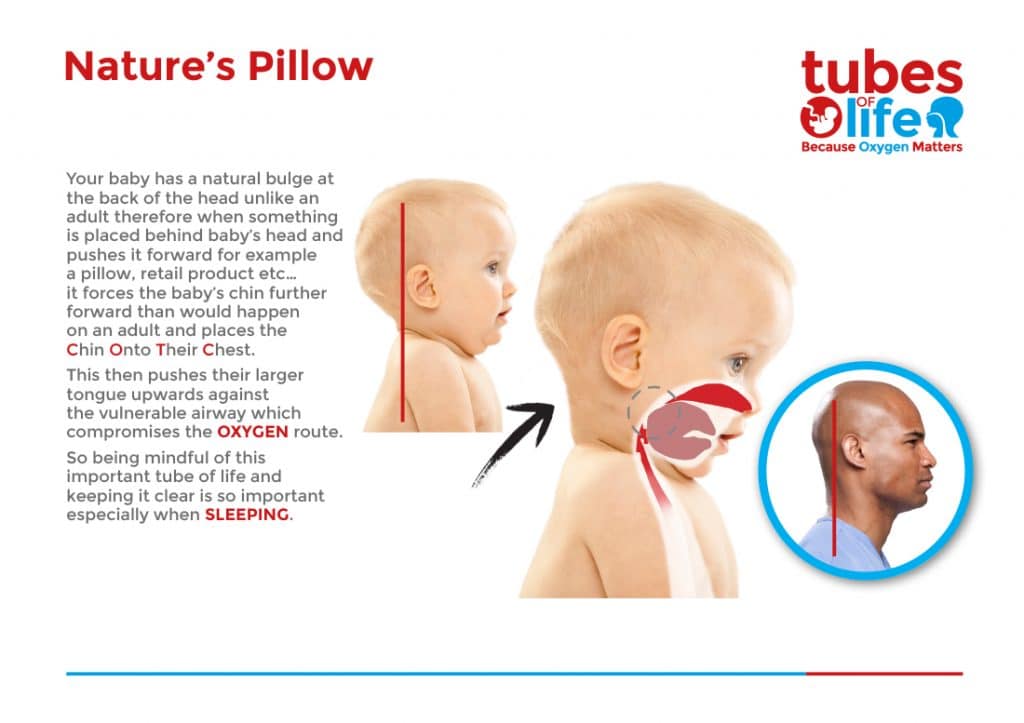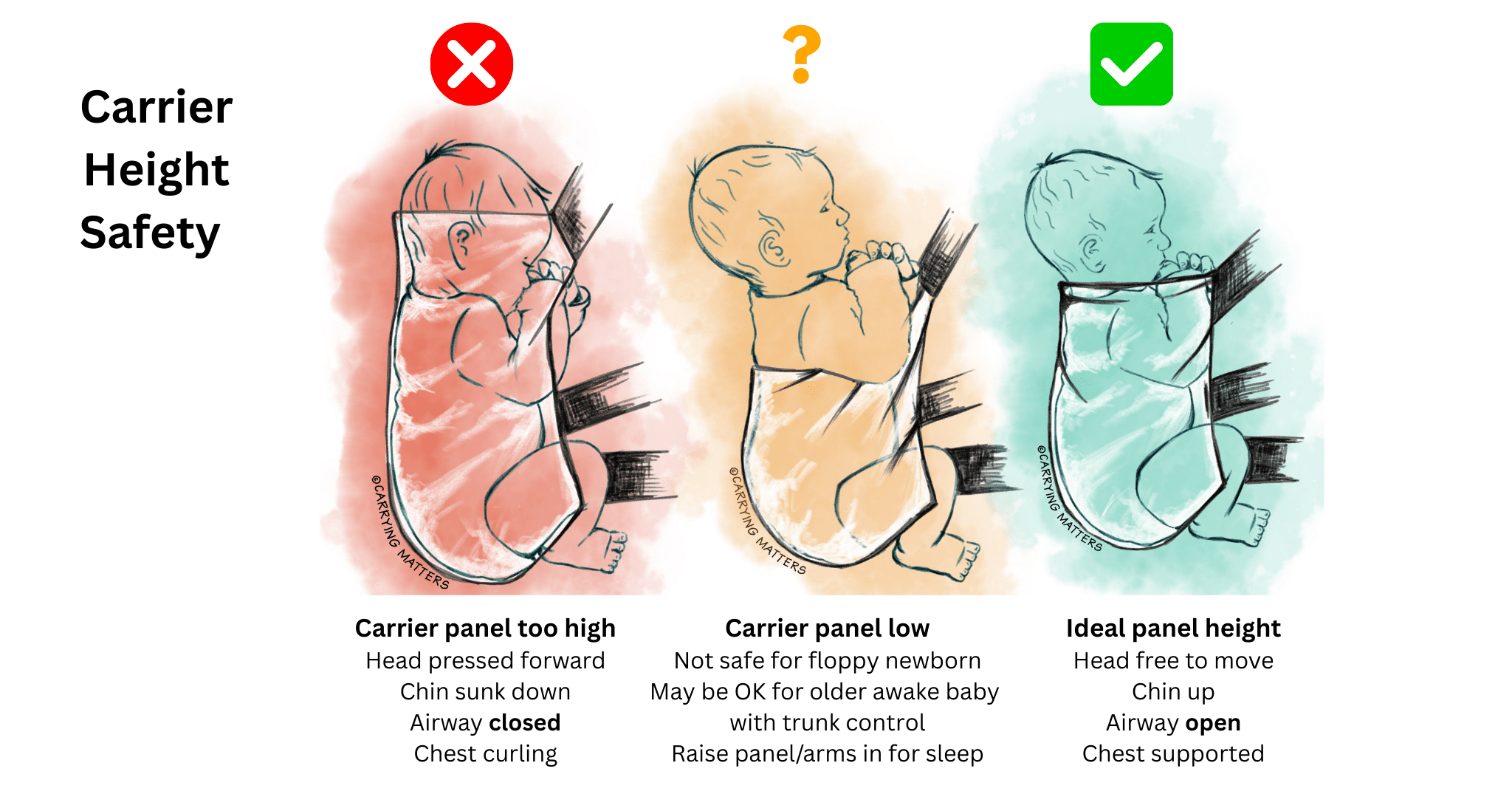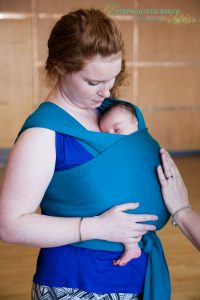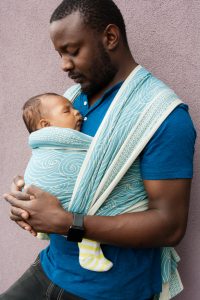Safe Height of Baby Carriers
It is very important to ensure babies’ airways are unobstructed at all times in all types of carrier, at all ages. This is of particular concern for young and small babies due to their anatomical considerations and their vulnerability, as well as their tendency to fall asleep when feeling warm and safe.
Babies are born with large, heavy heads with a prominent occipital curve (the solid bone at the back). This is more pronounced in babies than in older children and adults, and is often known as “nature’s pillow”. They also have large tongues and short necks, which makes it easier for their airway to become compressed and lost, making it hard for them to breathe.

With this information we can now look at the impact of carrier heights. Many manufacturers emphasise a tall panel as offering “head and neck support”, however this misunderstanding of baby anatomy with a focus on marketing can cause significant problems.
The traffic image below shows three carrier heights.
The red image with the cross symbol shows the impact of having a carrier that is too high for baby, or one that is too loose that baby can slump forward and sink down into. Baby’s head has been pressed forward by the panel height, so their chin has sunk onto their chest. Their airway is compromised and they are at risk. This baby needs to be taken out of the carrier so they can breathe safely. The carrier should be adjusted to the appropriate height, or not used until baby is big enough. When babies sleep, their muscle tone relaxes, so they may slump into carriers that have become too loose from their active weight. If baby is starting to fall asleep, the carrier must be adjusted to ensure it is snug enough around them so they do not sink downward and end up with their head pressed forward by the carrier, and losing their airway.
The green image with the tick symbol shows the optimum panel height. The carrier is reaching to the nape of the neck and earlobes are visible. The baby’s head is free to move from side to side and back and forth with no restrictions. Baby’s chin is off the chest and airway is open for easy breathing. The chest is well supported against the parent/carer so baby cannot slump into a curved C shape, even if they fall asleep. If baby does slump with sleep, the carrier needs to be adjusted so it is snug and baby’s chest is no longer curling forward.
The orange image with a question mark shows a panel that is low. This is not safe for a newborn, or a younger baby who lacks trunk and neck control, or one who is sleeping. They may fall backwards as there is inadequate support for their upper back. The panel will need to be adjusted to be long enough, reaching only to the nape of the neck. An older, awake baby may enjoy having arms out of the carrier for better visibility and engagement with the world. However they must have adequate trunk and neck support. In general, if a parent is able to perch their baby on their hip and support them confidently with one arm, that baby can be worn with arms out. As soon as they are showing signs of sleepiness, their arms need to be brought in and carrier adjusted to reach the nape of the neck for support, and to be snug around baby so they cannot slump.
What if my baby’s head is floppy?
Parents often worry about a baby having a floppy head in the newborn stage and it is natural to feel the need to support baby’s head. One hand to provide support when you lean forward or walk may be all you need, and babies will soon develop strength and co-ordination. The key thing for airway safety is to avoid forward slumping in a too-loose carrier. Looseness can cause wobbly heads, more importantly it can allow babies to slide and slump, so please check your carrier tension/fit and do not be tempted to raise the panel. Please visit your local library for support if you are struggling, we are all experienced at working with this issue and would be delighted to help.
Some people like to use the sides of a stretchy or woven wrap to provide gentle support to the back of baby’s head while asleep, as in the image below.
This can be helpful if their face remains free of fabric on the other side, but it must be done with caution and alertness to any sinking of the head, or baby wishing to change the direction of their face. I usually recommend flipping the fabric to ensure a good line of tension to help with support, and ensuring an open airflow on both sides.
Some people will use a rolled muslin or teatowel tucked into the horizontal layer. If you do this please ensure it is a narrow roll to avoid inadvertently tipping the occipital bone forwards. The image below shows how the roll remains at the nape of the neck and the fabric is rolled outward so the muslin cannot accidentally fall inside the space occupied by baby. Chin is up and airway is open. This is not usually necessary if the carrier is snug across baby’s upper back and they have a good pelvic tuck. Please see this link for more reading about the pelvic tuck.
What about buckle carriers whose panel is too long?
Some carriers have adjustable panels, which will help. For those that don’t, this is a challenge. Here is a video showing you how to raise baby inside a panel that is too tall (Ergobaby Omni 360 here). Do not be tempted to leave the panel too tall. See your local Iibrary if you are struggling, or wait till your baby has grown taller and the carrier now fits. Here is a photo tutorial showing you how to raise your baby inside a panel that is too long, if it cannot be adjusted.
My baby likes to face-plant!
This is not uncommon. Ensure good airflow on both sides of the face by flipping the shoulders of wraps and ensuring panel height is not too high up the sides. More reading here.
What if my baby has fallen asleep in the carrier on my back?
This can cause babies to feel loose and floppy and their head can fall backwards. This can often be rectified by adjusting their position and the snugness of the carrier. Children often loosen carriers by moving happily when awake, parents must be aware of this tendency and willing to adjust the carrier so airway is maintained at all times. See here for how to do this.
Facing out
Forward facing out brings its own challenges for an airway. Carriers that are too tall will cause pressure on baby’s tender neck when facing out. This is especially risky if they fall asleep and their head falls forward with their neck compressed by the carrier rim. It is not safe for a baby to sleep facing forwards. Sleeping babies must be removed from the forward facing out position and turned around for safe sleep. Please see this link for further reading.
Feeding in carriers
Feeding in carriers must be done safely. For the above reasons, there should never be any fabric behind baby’s head when breastfeeding, as their nose could also become blocked by breast tissue. Once the feed is over, baby must be removed or repositioned at an appropriate height on the hard upper part of the chest. Babies should not be left to sleep in a feeding position/height. Please see this link for further reading.
_________________
Link to image for sharing (and other resources) here.




